Throwback: Hewing with a Hatchet
The how, where, and what of hatchet hewing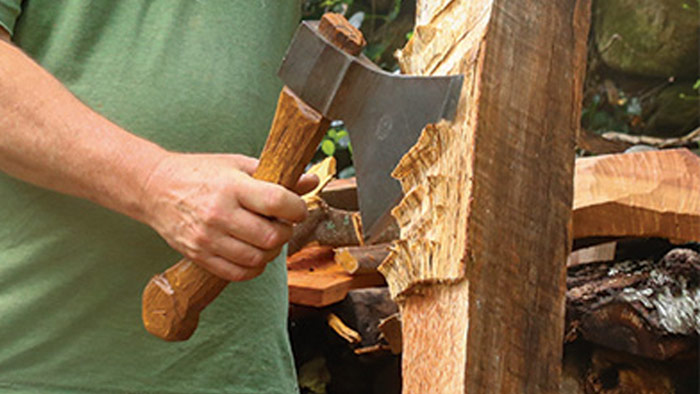
There are three basic types of ax work: chopping, in which the person works diagonally to the grain, as in felling trees and bucking logs; splitting, in which the wood is cut with the grain, as for firewood; and hewing, the most sophisticated of the three, in which the woodworker combines techniques of chopping and splitting. Hewing used to be common practice, and it still has a place in the modern woodworker’s repertoire. Craftspeople who traditionally hewed wood include post-and-beam carpenters, turners, furniture makers, coopers, boat builders, carvers of woodenware, wheelwrights, and makers of tool handles and agricultural implements. Wood sculptors have also used hewing techniques to their advantage. Hewing is perhaps the fastest and certainly the most direct way of bringing a log to approximate size, shape, and flatness.
Hatchet hewing
Hatchets can be used on stable massive timbers, such as in post-and-beam construction and boat building, but they are generally used for much finer work that must be held in place by hand. For this kind of work, you’ll need a support to prop the stock against. A waist-high hardwood stump set in the ground or on the shop floor is ideal.

You can also make a small chopping block from a slice of a log and place it directly over a leg on top of your workbench, handy in shops with limited space or where hewing is only an occasional undertaking. A shallow depression on one side of the chopping surface, made with a hatchet or chainsaw, keeps the wood from slipping, especially when you’re hewing at an angle. The edge of the stump or slab can also be used for support. Keep the striking surface clean; dirt and grit will dull a hatchet fast.
Hatchet weight and shape and your strength and speed will determine the effectiveness of your hewing strokes. Fine hewing is easier if you hold the hatchet at an angle, thereby slicing into the wood. For delicate work I sometimes wrap my thumb and index finger around the hatchet head. In hatchet work both hands are busy, as you must also pay attention to the nonhewing hand that holds the work. All axes and hatchets are easier to control in vertical strokes, so it is constantly necessary to invent ways of holding the wood.
In most cases, begin hewing a few inches above the end set against the stump. Progress upward with succeeding strokes. You can start at the upper end and work down, but there will be more risk of the wood splitting or going out of control. Hew notches and concave shapes with conventional hatchets and axes, beveled on both sides. Place the wood on the stump, end grain down, and hew toward the center of the desired shape. Work from both sides to make a V or C shape with small, easy strokes to avoid splitting. Making a sawcut down the center of a concave shape to full depth also helps prevent splitting.
Any hatchet is effective for hewing close to the grain angle. But you can chop a steep angle only with a sharp hatchet and the work well supported (hold the work over the edge of the stump), taking small shavings with each stroke.
Photo: Tad Stamm
Fine Woodworking Recommended Products

Veritas Precision Square
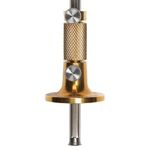
Tite-Mark Marking Gauge
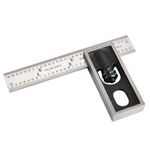
Starrett 4" Double Square
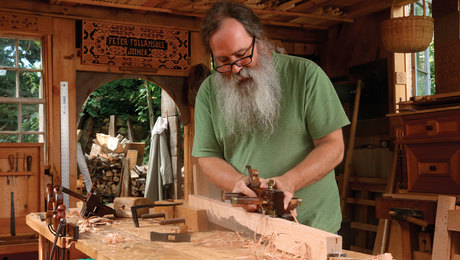
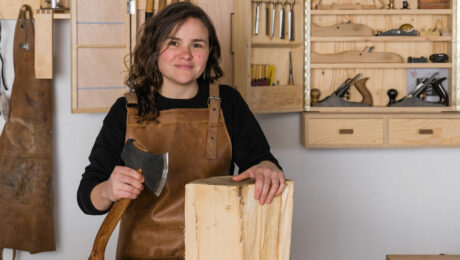
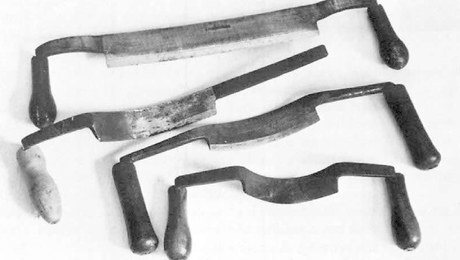
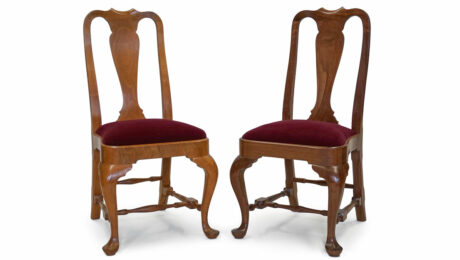

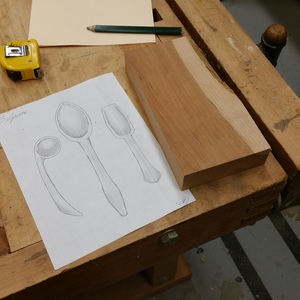
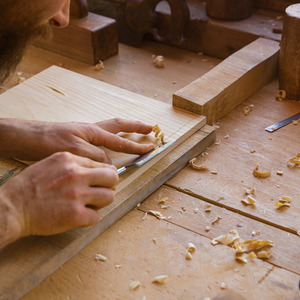








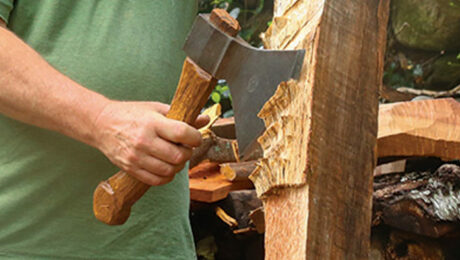
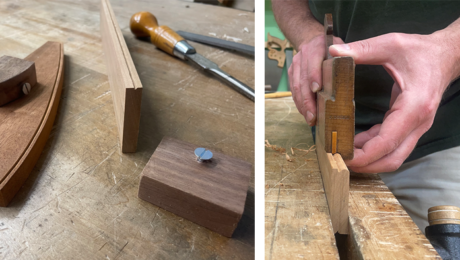








Log in or create an account to post a comment.
Sign up Log in